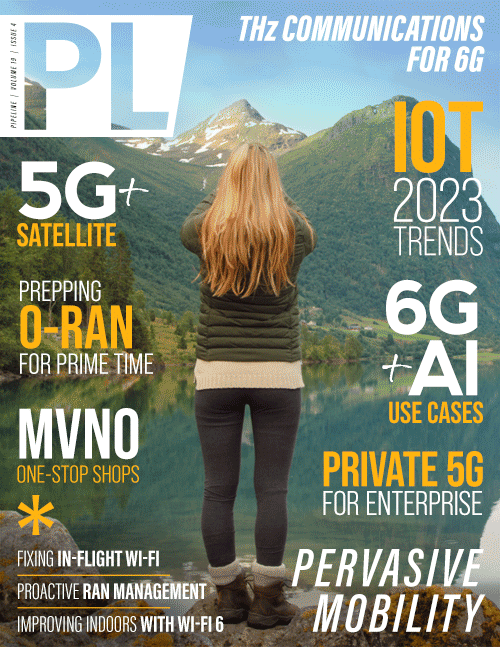THz Communications for 6G
Wireless Links in a Digital World
high resolution, which can be used to improve the communication system. The capability of THz to sense the environment by THz imaging or THz spectroscopy is another interesting aspect. Mobiles can sense the environment THz frequencies and the THz data link can be used to transmit the potentially ultra-high data volume within a short period. Other potential mobile applications with high data rate requirements are, for example, virtual and augmented reality.
Demonstrating the feasibility
of THz communications
In recent decades, numerous research groups have demonstrated that THz communications are feasible. For example, in 2013 a group at KIT in Germany demonstrated the first 100 Gbps link over a distance of 20m in a lab environment using combination of electronic and photonic approaches, setting a world record. A recent demonstration has achieved link distances of more than 320m in an outdoor environment in the frequency range 155 to 175 GHz. In June 2022, the EU-Japan Horizon 2020 project ThoR demonstrated the first bi-directional backhaul transmission of real data at 300 GHz with a net data rate of 2x20 Gbps over a distance of 160m using 8.64 GHz of spectrum.
European research projects
In Europe, THz communications have made significant progress in several large collaborative research projects—for example in the Beyond 5G cluster carried out within the Horizon 2020 framework. On January 1, 2023, three projects (Tera6G, TIMES and TERRAMETA) exclusively dedicated to THz communications
were launched within the Smart Networks and Services Joint Undertaking 6G
Initiative, These initiatives are complemented by national initiatives, for example the 6G Flagship project in Finland or the
6G Hub projects in Germany, which also comprise significant portions of THz research activities.
Standardization and regulation
The first initiatives toward standardization were already underway in 2008 when the IEEE 802.15 THz Interest Group (now Standing Committee THz) was established. This group was the nucleus, which triggered the development of IEEE Std 802.15.3d-2017, the first worldwide standard for wireless communications in the frequency range 252-321 GHz. The applications addressed by this standard are the above-mentioned point-to-point applications. Currently a revision of this standard is ongoing, which targets extending the frequency range up to 450 GHz, among other objectives.
Intensive regulatory activities have been performed in the framework of the World Radiocommunications Conference (WRC) 2019. The activities contained sharing studies with passive services like Earth Exploration Satellite Service (EESS) and Radio Astronomy Service. As a result of WRC 2019, the radio regulations contain 160 GHz of spectrum, which can be used on the frequency range between 252 and 450 GHz. This includes an allocation of 23 GHz below 275 GHz to FIXED and MOBILE Service and the identification of 137 GHz above 275 GHz, where no harmful interference to passive services has been revealed.
ETSI ISG THZ
The above-mentioned research initiatives and the regulatory boundary conditions form a sound basis to consider THz in 6G standardization activities also in 3GPP. It is expected that these activities will start in 2025. As a preparation for these standardization activities, ETSI recently launched its Industry Specification Group on Terahertz (ISG THz) to coordinate pre-standards research efforts on THz technology across various European collaborative projects, extended with relevant global initiatives.
This is a move toward paving the way for future standardization of the technology, for this candidate technology for 6G. The ETSI group will initially focus on two categories of use cases. The first one will include mobile applications with high data rate requirements, such as virtual and augmented reality, applications for in-flight and in-train entertainment, and vehicular and satellite communications. The second category includes applications requiring both communication and sensing functionalities, such as holographic telepresence, and interactive and cooperative robotics. Apart from identifying use cases and frequency bands of interest, ETSI ISG THz will focus on modelling aspects such as channel modelling and the modelling of the RF system.


















